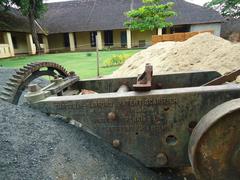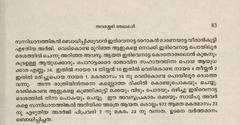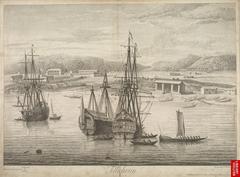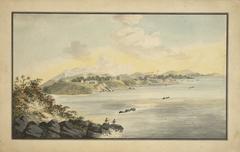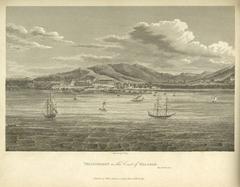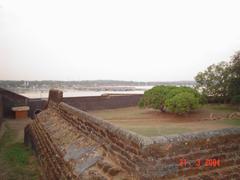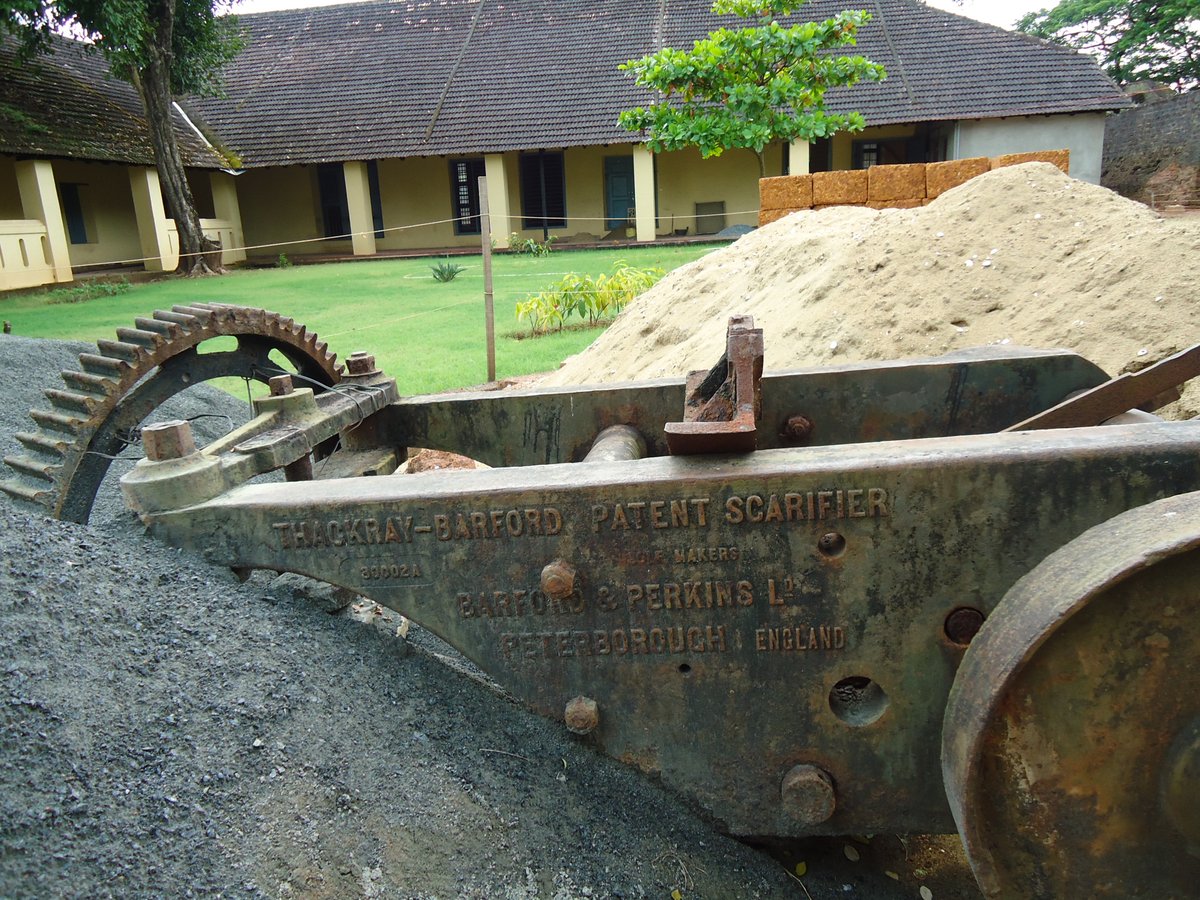
Visiting Tellicherry Fort in Thalassery: Hours, Tickets, and Tips
Date: 18/07/2024
Introduction
Tellicherry Fort, also known as Thalassery Fort, is a historical landmark situated in Thalassery, Kerala, India. Erected by the British East India Company in 1708, the fort played a pivotal role in the colonial history of the region. Its strategic location near the Arabian Sea was crucial for maritime trade routes, particularly in the spice trade, which was a significant economic driver in the 18th century (Kerala Tourism). The fort’s formidable architecture, constructed using locally abundant laterite stones, showcases a blend of European military design adapted to Indian conditions. With its thick walls, bastions, and secret tunnels, Tellicherry Fort stands as a testament to the engineering prowess of the British era (Archaeological Survey of India).
Beyond its architectural significance, the fort was a central figure in the Anglo-Mysore Wars, serving as a defensive stronghold against the forces of Hyder Ali and Tipu Sultan. It also became a hub for trade, fostering economic prosperity and cultural exchanges in Thalassery (Indian History Sourcebook). Despite its decline following the British Crown’s establishment in India, the Archaeological Survey of India has preserved the fort as a protected monument, making it a popular tourist destination today (ASI).
Whether you’re a history enthusiast, architecture buff, or casual traveler, Tellicherry Fort offers a fascinating glimpse into Kerala’s colonial past. This comprehensive guide will provide you with all the information you need for a memorable visit, including visiting hours, ticket information, travel tips, and nearby attractions.
Table of Contents
- Early Establishment and Strategic Importance
- Architectural Features
- Role in the Anglo-Mysore Wars
- Economic and Cultural Impact
- Decline and Preservation
- Notable Events and Personalities
- Visiting Tellicherry Fort
- Modern-Day Significance
- FAQ Section
Early Establishment and Strategic Importance
Tellicherry Fort, located in Thalassery, Kerala, India, was constructed by the British East India Company in 1708. The fort was built primarily to establish a stronghold in the Malabar region, crucial for the spice trade. The strategic location of Thalassery, with its proximity to the Arabian Sea, made it an ideal spot for the British to control maritime trade routes and protect their commercial interests. The fort’s construction marked the beginning of British colonial influence in the region (Kerala Tourism).
Architectural Features
The fort is an excellent example of European military architecture adapted to Indian conditions. It is built using laterite stones, which are abundant in the region. The fort’s walls are massive, with a height of about 10 meters and a thickness of 3 meters, designed to withstand cannon fire. The fort has a square layout with bastions at each corner, providing a vantage point for surveillance and defense. The main entrance is through a large, arched gateway, which leads to an open courtyard. Inside the fort, there are several buildings, including a chapel, a cemetery, and the residence of the fort’s commander (Archaeological Survey of India).
Role in the Anglo-Mysore Wars
Tellicherry Fort played a significant role during the Anglo-Mysore Wars, which were fought between the British East India Company and the Kingdom of Mysore. The fort served as a base for British military operations against the forces of Hyder Ali and his son Tipu Sultan. The fort’s strategic location allowed the British to launch attacks and also provided a safe retreat during the conflicts. The fort’s defenses were tested during these wars, and it successfully withstood several sieges, proving its military significance (Indian History Sourcebook).
Economic and Cultural Impact
The establishment of Tellicherry Fort had a profound impact on the local economy and culture. The fort became a hub for trade, attracting merchants from various parts of India and abroad. The British established a factory (trading post) within the fort, where spices, particularly pepper and cardamom, were traded. This led to the growth of Thalassery as a major trading center. The fort also facilitated cultural exchanges, as people from different regions and backgrounds interacted and settled in the area. The influence of European architecture and lifestyle can still be seen in Thalassery today (Kerala State Archives).
Decline and Preservation
With the decline of the British East India Company and the establishment of British Crown rule in India, the strategic importance of Tellicherry Fort diminished. The fort was eventually abandoned as a military outpost and fell into disrepair. However, recognizing its historical and architectural significance, the Archaeological Survey of India (ASI) took over the fort’s maintenance and restoration in the mid-20th century. Today, the fort is a protected monument and a popular tourist attraction, offering visitors a glimpse into the colonial history of Kerala (ASI).
Notable Events and Personalities
Several notable events and personalities are associated with Tellicherry Fort. One of the most significant events was the visit of the French Admiral Pierre André de Suffren in 1782 during the Anglo-French War. The fort also served as a residence for notable British officials, including Robert Adams, who played a crucial role in the administration of the Malabar region. The fort’s chapel is believed to have been visited by missionaries, including the famous German missionary Hermann Gundert, who contributed significantly to the development of the Malayalam language (Thalassery Heritage).
Visiting Tellicherry Fort
Visitor Information
Visitors to Tellicherry Fort can explore its various sections, including the bastions, the chapel, and the commander’s residence. The fort is open to the public from 9:00 AM to 5:00 PM, and there is a nominal entry fee. Guided tours are available, offering detailed insights into the fort’s history and architecture. The fort is easily accessible by road, and the nearest railway station is Thalassery, located about 2 kilometers away. The best time to visit is during the winter months, from November to February, when the weather is pleasant (Kerala Tourism).
Nearby Attractions
While visiting Tellicherry Fort, tourists can also explore nearby attractions such as the Overbury’s Folly, a historic park with panoramic views of the Arabian Sea, and the Thalassery Pier, a popular spot for evening strolls. Additionally, the Muzhappilangad Drive-in Beach, one of the longest drive-in beaches in Asia, is a must-visit for its unique experience.
Modern-Day Significance
Today, Tellicherry Fort stands as a testament to the region’s colonial past and its role in shaping the history of Kerala. The fort is a popular tourist destination, attracting history enthusiasts, architecture buffs, and casual visitors alike. The fort’s well-preserved structure and the surrounding scenic beauty make it a must-visit site in Thalassery. The fort also hosts cultural events and exhibitions, providing a platform for local artists and promoting the region’s rich heritage (Kerala Tourism).
FAQ Section
What are the opening hours of Tellicherry Fort?
The fort is open to the public from 9:00 AM to 5:00 PM.
How much are the tickets for Tellicherry Fort?
There is a nominal entry fee for visiting the fort.
What is the best time to visit Tellicherry Fort?
The best time to visit is during the winter months, from November to February.
What are the nearest attractions to Tellicherry Fort?
Nearby attractions include Overbury’s Folly, Thalassery Pier, and Muzhappilangad Drive-in Beach.
Conclusion
Tellicherry Fort remains a significant historical and cultural landmark that encapsulates the colonial history and architectural grandeur of Thalassery. Constructed in 1708 by the British East India Company, the fort’s strategic location and formidable design made it a crucial site for maritime trade and military operations (Kerala Tourism). Over the centuries, the fort has witnessed significant historical events, including the Anglo-Mysore Wars, and has played a vital role in the economic and cultural development of the region (Indian History Sourcebook).
Today, Tellicherry Fort is not only a protected monument but also a popular tourist attraction that offers a unique window into the past. Visitors can explore its well-preserved bastions, secret tunnels, and scenic views of the Arabian Sea, making it a must-visit destination for anyone interested in India’s colonial history (ASI). The fort also serves as a venue for cultural events and exhibitions, further enriching its modern-day relevance. For a fulfilling and educational experience, consider visiting Tellicherry Fort during the winter months, when the weather is most pleasant, and don’t miss the nearby attractions such as Muzhappilangad Drive-in Beach and Overbury’s Folly (Kerala Tourism).
For more detailed information and updates, download our mobile app Audiala, explore related posts, or follow us on social media.
Sources
- Kerala Tourism, 2024, Kerala Tourism
- Archaeological Survey of India, 2024, ASI
- Indian History Sourcebook, 2024, Fordham University
- Thalassery Heritage, 2024, Thalassery Heritage
- Kerala State Archives, 2024, Kerala State Archives
